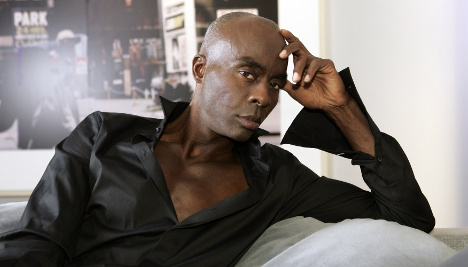Coming to Germany two decades ago, Darnell rose to national fame in 2006, when he was an expert on Klum’s Germany’s Next Top Model. Last Friday, he helped launch the third season of “Das Supertalent,” Germany’s version of “Britain’s Got Talent,” with fellow TV personalities Bohlen and Sylvie van der Vaart. The Local caught up with him for a few questions.
Name:
Bruce Darnell
Age:
52
Where do you live?
I live in the beautiful city of Aachen, near the border to the Netherlands.
Where are you from originally?
New York City.
What did you do before coming to Germany?
I was a parachutist in the US Army.
What brought you here and when?
I came in contact with Germany through the military, and over 20 years ago, I moved to Munich. I wanted to do something else in life than serve in the army.
What was your first job in Germany and how did you find it?
I worked in a discotheque in Munich after finding the job through friends.
How would you describe your current job?
I work in one of the craziest businesses in the world – the fashion industry. I choreograph fashion shows, and I’m also part of the jury of Das Supertalent. I’ve also written a styling guidebook. You can’t say my life is boring!
What was the toughest part of coming to terms with German language and culture?
In the beginning, the language was pretty hard to learn, especially the horrible grammar. And I thought things like “German carnival” were strange – it was a real culture shock. But I like German people and their culture. People are really polite and always want to give their best – that’s very impressive.
What was the easiest part?
It was easy to get to know people.
What has your experience been like operating professionally in Germany?
In Germany there are many possibilities to work in completely different fields. But you have to give your best, be disciplined and work hard for your aims. Many people helped me to get ahead and gave me the chance to test different things.
What percentage of your life would you say you split between English and German?
I’ve been living in Germany for such a long time now that I feel 90 percent German.
What fascinates you most about German culture?
People help each other and think of others. I like the openness to other cultures, the food (e.g. potato-soup) and the great diversity in art, fashion and design. There are so many exciting cities where so many new things emerge, like in Berlin for example.
What’s the most rewarding aspect of your work here?
The love that many people give to me. Their sympathy, affection and readiness to help others. Here in this country I can be honest, show my feelings and don’t have to fool anybody.
What’s your best advice for someone looking to ‘make it’ in Germany?
Just go there. Live your dream and ask people for help – in Germany it is self-evident to help each other. But you need the will to work and you need to be ambitious. There are many public and private places that can help to find a job or an apartment. Nobody is left alone here.




 Please whitelist us to continue reading.
Please whitelist us to continue reading.
Member comments